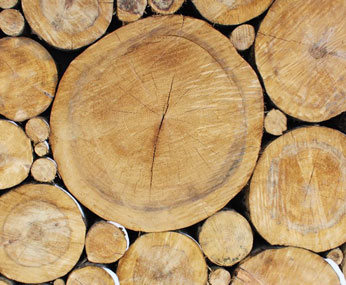At a time when they should be busier than ever, a timber shortage is putting pressure on small builders to keep housing projects – and their own profitability – on track.
By Cameron Cooper
Economist Tim Reardon thinks the outlook for builders, tradies and apprentices who are seeking work has never been better—except for one sticking point that is clouding the picture.
A timber shortage caused by an international home-building boom and supply chain disruptions as a result of COVID-19 is leaving some builders short of supplies and causing on-site delays. This comes at a time of high levels of housing starts in Australia as a result of government building incentives and the diversion of people’s spending from overseas travel to DIY and renovation projects.
Reardon, the chief economist at the Housing Industry Association, says the timber-supplies dilemma is testing some builders as they try to keep up with ongoing demand for housing on the back of the Australian Government’s HomeBuilder program, applications for which closed in April. The initiative has provided eligible owner-occupiers, including first-home buyers, with either a $25,000 or $15,000 grant for housing or renovation projects.
“We’ve seen an enormous spike in building demand that has been driven by HomeBuilder, lower interest rates and demographic shifts,” Reardon says. “So there’s never been a better time to be an apprentice in the building industry.”
However, he concedes that the lack of timber supplies is a problem. Australia relies on imports for 20 to 25 per cent of its timber. High demand for timber globally has seen prices rise by up to 500 per cent in a market such as the United States, with timber traders therefore opting to send much of their product to the US rather than markets such as Australia. Supply chain constraints have also been a factor.
Although Australia’s domestic timber supply is up about 17 per cent compared with mid-2020, Reardon says it is simply not enough. “Domestic production is never going to be sufficient to meet this enormous volume of demand.”
STRETCHED TO THE LIMIT
Across Australia, new home builds and renovations are taking longer due to a scarcity of timber. The shortfall is also having a domino effect, with electricians, bricklayers and plumbers often left waiting to do their work because of house-frame delays. The fear is that businesses could close, and jobs may be lost.
Australian Forest Products Association (AFPA) CEO Ross Hampton says it is clear that building demand is stretching resources, whether it is timber, tradies or even products such as bathroom fittings. “It’s important to note that shortages are being seen across all building products, not just timber,” he says.
Hampton notes that Australia’s sawmills are running at increased capacity to supply as much timber as possible, with overtime, double shifts and weekend operations becoming the norm. “So there is very little capacity to increase production.”
He believes governments have a role to play in making Australia more self-sufficient. “The current timber shortage should be a wake-up call to Australian policymakers that cyclical timber shortages will become more frequent and acute if state and federal governments don’t use policy levers to drive more softwood (pine) plantings to meet future demand,” he says. “It is clear that we cannot rely on imported timber to fill the gap—securing Australia’s housing timber needs must be seen as a sovereign capability priority alongside fuel and food.”
Despite the timber dilemma, Reardon is confident that builders will not become idle, because so much work is already under way. “It’s going to take the industry some time to digest,” he says. “But all those homes will be built—it may just take a little longer than originally anticipated.”
SEEKING SOLUTIONS
The AFPA believes there is no quick fix to the timber shortage, but that plantation expansion and management will be the key.
“The capital investment to increase production cannot happen if we do not grow the plantation estate to increase the future log supply,” Hampton says. “That means that, longer term, we can boost our timber processing capacity by increasing our plantation estate today.”
The association estimates Australia has about two million hectares of plantations across softwood and hardwood, but that it needs another 400,000 hectares to meet future demand.
“Compounding the shortage and need for urgent action to grow the plantation estate, about 10 per cent of Australia’s one million hectare softwood estate was lost during the 2019-20 summer bushfires,” Hampton says.
Given the lack of timber, Reardon expects some builders to turn to steel-framed housing from manufacturing strongholds such as Wollongong in NSW. He says such steelwork accounts for about 10 to 12 per cent of home frames in Australia.
Reardon says builders need a compelling reason to switch to steel, and the current timber shortage provides such a reason. “So we can expect to see a significant rise in steel-framed housing in Australia. Once builders switch to steel, they don’t switch back to timber because business relationships are formed with suppliers and if they don’t let you down you tend to stick with them.”
POSITIVE OUTLOOK
While he expects Australia will by and large have to ‘wait out’ the timber shortage, Reardon says there are positive signs on the horizon of stronger timber supplies. International timber producers are lifting output, leading to significant recent price falls for timber in the US.
“That’s a clear sign that the global market is back closer to a supply and demand balance.”
Reardon says it typically takes three to six months for such trends to have an impact in Australia. “I think we are six months into a 12-month-long problem.”
As to the role for governments, Reardon says unlocking additional forests for timber production and ramping up under-utilised mills are among the possible responses.
“But this is a case where time is the necessary ingredient to solve this problem.”






